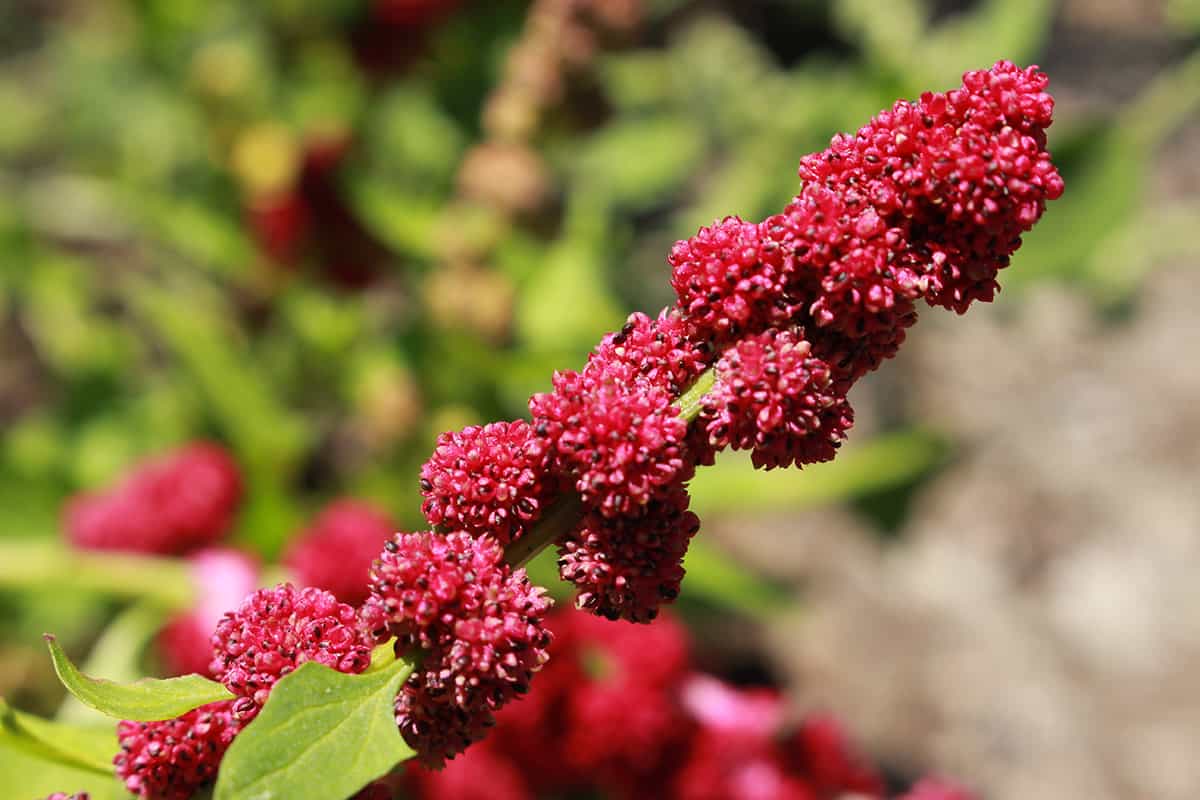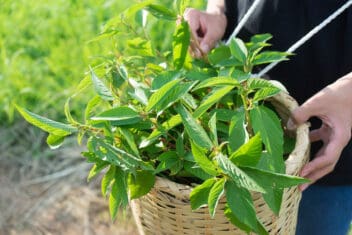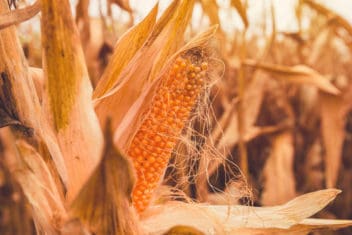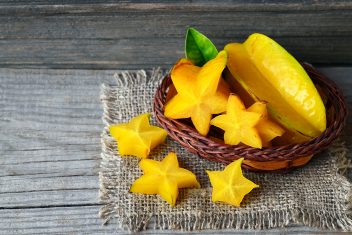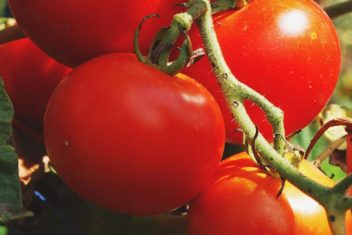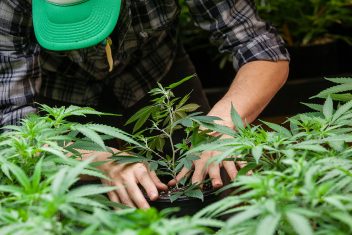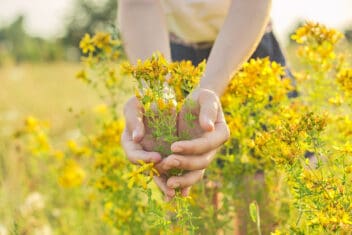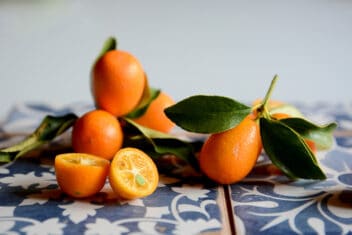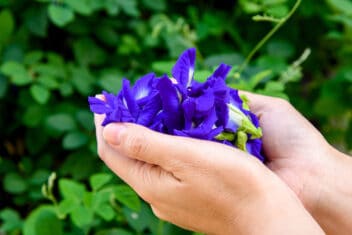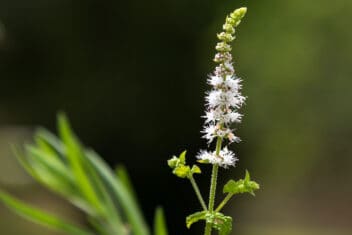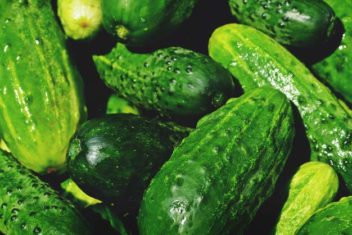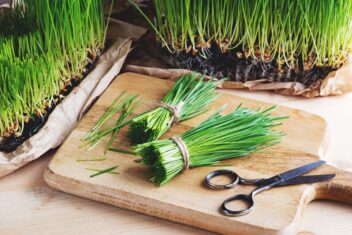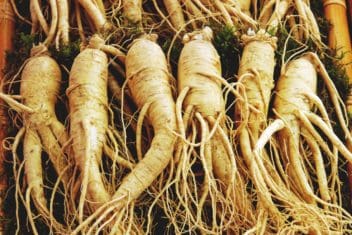Strawberry spinach is a strange plant that not enough people are growing. This spinach relative has edible leaves and berries that taste delicious!
When I heard about this plant, I was intrigued. I found some at my local farmers market, brought it home and the passion for this plant grew from there.
The berries are similar to strawberries in color only. They have a flavor a little like a mulberry, with fruity, floral undertones.
Easy to grow, less likely to bolt than regular spinach, and tasty as anything, this is a vegetable I highly recommend to any gardener.
What is Strawberry Spinach?
Strawberry spinach (Blitum capitatum or Chenopodium capitatum) is native to North America, parts of Europe, and New Zealand, where it grows wild. But it’s increasingly popular in home gardens, as well.
It’s a cold-weather plant that’s related to spinach and is entirely edible. The leaves, roots, and fruits can be eaten raw or cooked. It tends to self-seed and, in some areas, is considered invasive.
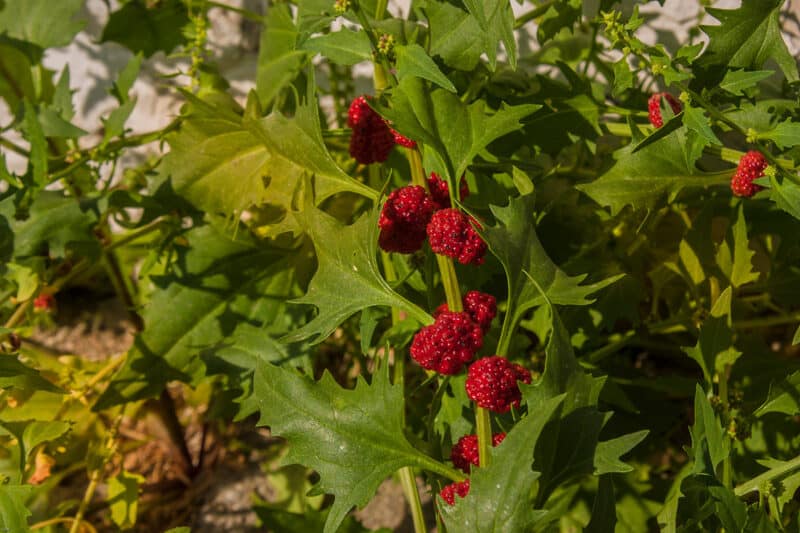
Strawberry spinach is also related to beetroot, swiss chard and quinoa.
Varieties of Strawberry Spinach
Strawberry spinach is an heirloom and little has been done to create different varieties beyond the original wild plant.
You’ll see it sold as a variety of different names, but it’s all the same plant. I’ve seen it called:
- Strawberry Blight
- Strawberry Goosefoot
- Blight Goosefoot
- Strawbini
- Indian Paint
- Indian Ink
How to Plant Strawberry Spinach
Strawberry spinach is a forgiving plant, especially if you compare it to regular spinach. It grows well in zones 2 to 10 as an annual or self-seeding perennial.
This plant can tolerate a light frost and come out unscathed. It’s also more heat tolerant than other spinach and is less likely to bolt to seed in hot, dry conditions.
When growing strawberry spinach in the garden, don’t put them where you have planted another member of the family for two seasons.
I find strawberry spinach to be tolerant of most soils, but the best harvest I got, I planted in loose, loamy soil that drained well. The pH should be between 6 and 6.8, though it will grow well in slightly more alkaline soil up to a pH of 7.5.
Strawberry spinach grows to about two feet tall and keeps producing as you pick the leaves.
Most people are growing it as an annual, but you also let strawberry spinach self seed and regrow each year.
Plant outside in spring when the temperatures have warmed and any chance of severe frost has passed.
Planting Seed
You can purchase seeds, or get them from a plant that has gone to seed.
To collect them from a plant, allow or find one that has gone to seed. The seeds come from the berries, so wait for them to be very ripe, almost falling off. Cut the entire head off and place on a paper towel somewhere warm and dry (the kitchen is perfect.)
As the seeds dry, they fall off and collect on the paper towel. Use straight away, or place in a paper envelope and seal well until you’re ready to plant.
You may need to place the berry in a fine sieve and wash the pulp away, leaving the seeds and then dry them on a paper towel.
Sprinkle seeds on the surface of good quality seed raising mix. Cover lightly with more mix and spray with a water bottle.
Make sure to keep the soil moist and don’t allow it to dry out or the seeds will fail to germinate.
If you want to plant directly outside, wait until all frosts have passed. Sow a few seeds in short rows of 18 inches apart. Keep watered well.
When the plants are big enough, thin out so the individual plants are at least 12 inches apart.
Container Growing
Growing strawberry spinach in containers is a smart idea, but keep in mind that in the ground, the roots are about a foot deep, so consider that when you choose a pot.
Strawberry spinach does well in containers, as long as you don’t let them get too dry. It also helps prevent them from spreading throughout your garden.
Use a quality potting mix or a specific vegetable mix. It’s better to plant in small pots, and then transplant a seedling into the final container after hardening off.
Caring for Strawberry Spinach
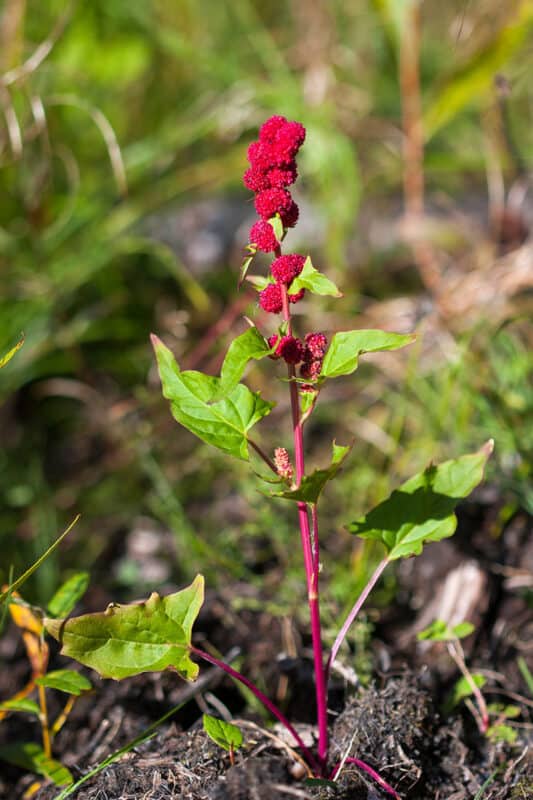
Now that you’ve got your strawberry spinach in the ground, it’s time to keep it growing strong. As long as you have it the conditions ir prefers, it’s not too hard to keep this plant happy.
Fertilizer
Being a leafy green, you’ll want to use an all-purpose fertilizer or one that’s high in nitrogen. Your goal is to encourage big, dark, and healthy leaves. The berries take care of themselves.
Fertilize once every five to seven weeks, or more if the plant looks like it’s struggling. Water well after fertilizing.
Water
Keep the soil around strawberry spinach moist. If the surface is dry, dig down or stick your finger into the soil about an inch deep. If the soil is still dry, you can water, but if it’s still moist an inch down, don’t water yet.
Water the soil around the plant, or at the base. Don’t water the leaves directly.
Deadheading
The berries of strawberry spinach turn into seeds if you let them grow. If you don’t want self-seeding, remove all the berries. Eat or cook with them and at the end of the season, but make sure you have removed them all, or the plant will re-seed itself.
Remove any dead, dying or diseased leaves to keep the plant healthy.
Companion Planting for Growing Strawberry Spinach
Plant strawberry spinach with
- Lettuce
- Leaks
- Peas
- Radish
- Strawberries
Don’t plant with potatoes.
Common Problems and Solutions for Growing Strawberry Spinach
As with most plants, keep your strawberry spinach growing healthy and it will better able to fend off pests and disease. Water well and fertilize when necessary.
Unfortunately though, there may be times when pests and diseases strike. Here are the ones to watch for.
Aphids
These little sap-sucking pests seem to love all plants and strawberry spinach is no exception.
I like to eat the young strawberry spinach leaves raw in salads, so I prefer not to use any sort of spray to get rid of these tiny bugs.
A quick blast with the hose is effective when the numbers are low. If there are a lot of aphids, use organic pyrethrum for a quick knockdown. Make sure you abide by any withholding period in the instructions.
Neem oil can also be applied regularly if needed.
Introduce or attract ladybugs because they love to devour aphids.
Cabbage Loopers
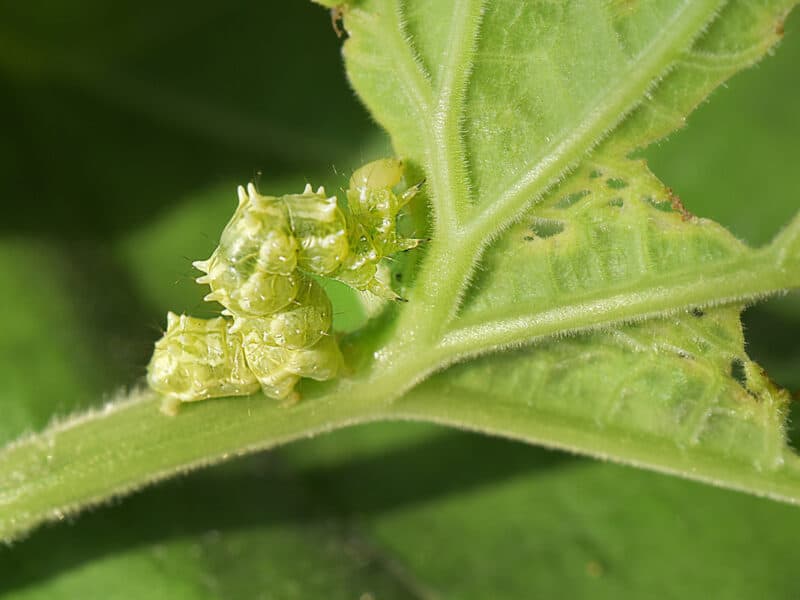
Luckily, cabbage loopers are easy to see, so you can hand-pick them off whenever you see them. My chickens love them, so I just throw them to the birds.
Cabbage loopers damage the leaves through constant eating, so they are a real menace to plants when you want to eat the leaves yourself.
Regular sprays of neem oil should make the strawberry spinach unpalatable.
Cutworms
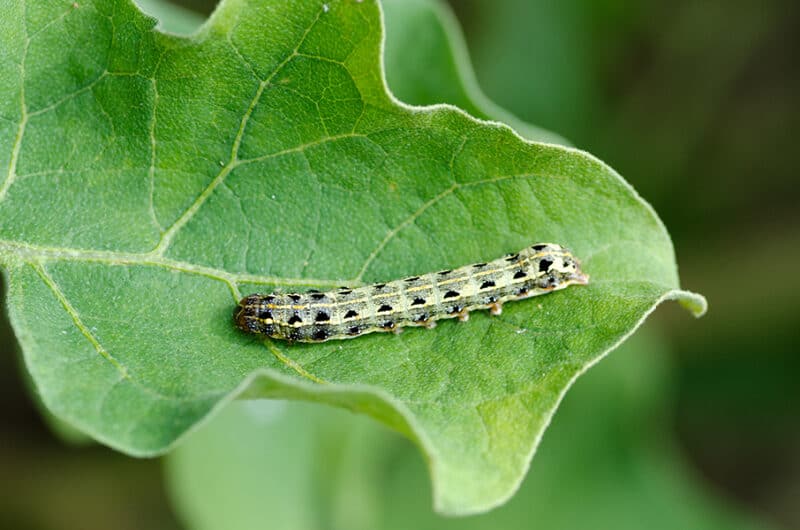
Cutworms are one pest that does a lot of damage in a short period of time. These caterpillars are about half an inch long and can be black, grey, or brown.
They essentially cut small plants off at the base as they chew through.
Use diatomaceous earth sprinkled around the plant on the soil. Check out our cutworm guide for more tips on controlling this pest.
Flea Beetles
These tiny little jumping insects can do a lot of damage to leaves, despite their diminutive size.
Flea beetles increase in numbers rapidly, so once you know they are there, you should act straight away.
Use floating row covers if you live in an area that isn’t too windy. I find the best thing for flea beetles is a regular application of neem oil.
Slugs and Snails
Slugs and snails are my biggest pests around strawberry spinach. I go out at night with a headlamp and pick them off for the chickens.
At certain times of the season when they are too many to hand pick, I will resort to snail and slug pellets.
Harvesting Strawberry Spinach
After all that work growing strawberry spinach (it wasn’t that hard, right?), it’s time to reap the rewards! Harvest the leaves at any point once they have formed.
As long as there is enough time left in the season, new leaves will continue to form.
I use the young, tender leaves in salads and stir-fries.
The older leaves I cook in stews, soups, or wilt down in a little butter and salt.
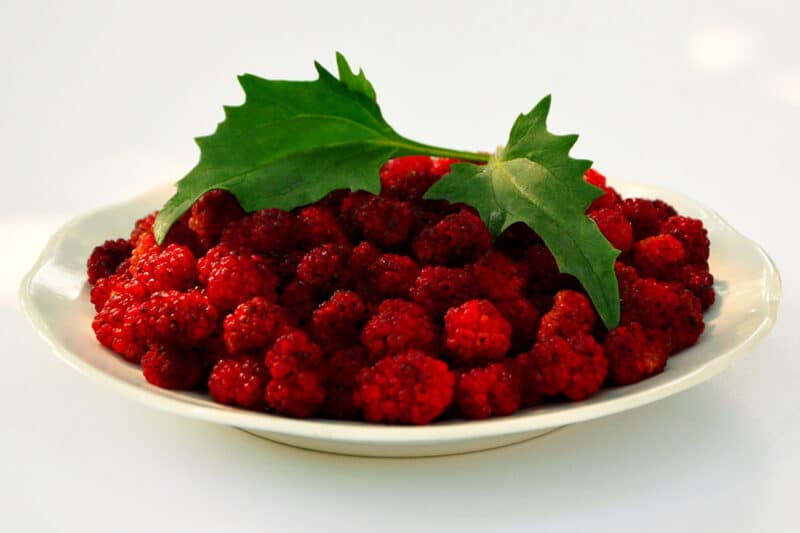
Pick the berries when they are fully ripe. They should be dark red. They go well in salads and desserts.
